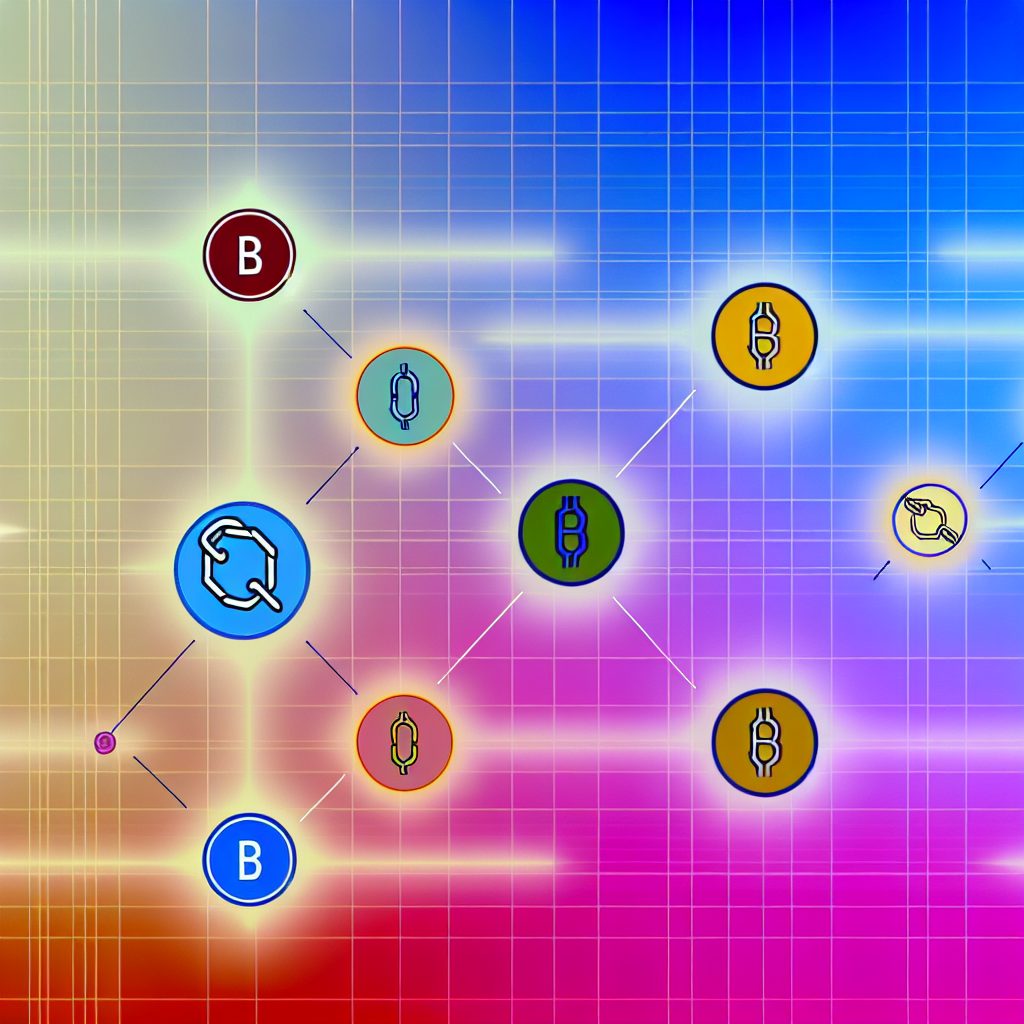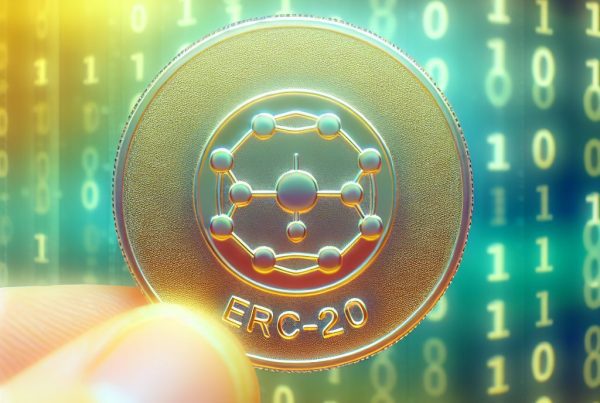Understanding Multichain Tokens in the Cryptocurrency Landscape
The cryptocurrency industry has evolved significantly over the past few years, introducing various innovations that enhance the functionality and usability of digital assets. Among these innovations, multichain tokens have emerged as a pivotal development, allowing for greater interoperability and flexibility across different blockchain networks. This article delves into the concept of multichain tokens, their significance, and their impact on the future of cryptocurrency.
What Are Multichain Tokens?
Multichain tokens are digital assets that can operate across multiple blockchain networks. Unlike traditional tokens that are confined to a single blockchain, multichain tokens leverage the capabilities of various platforms, enabling users to transact, trade, and utilize these tokens in diverse ecosystems. This cross-chain functionality is crucial in addressing the limitations of single-chain tokens, such as scalability, transaction speed, and accessibility.
The Importance of Multichain Tokens
The rise of multichain tokens is driven by several factors:
- Interoperability: Multichain tokens facilitate seamless interactions between different blockchain networks, allowing users to transfer assets without the need for intermediaries.
- Enhanced Liquidity: By being available on multiple platforms, these tokens can tap into various liquidity pools, making it easier for users to buy, sell, or trade them.
- Broader Use Cases: Multichain tokens can be utilized in various applications, from decentralized finance (DeFi) to non-fungible tokens (NFTs), expanding their utility.
- Risk Mitigation: By diversifying across multiple blockchains, users can reduce the risks associated with relying on a single network.
How Multichain Tokens Work
Multichain tokens operate through a combination of smart contracts and cross-chain protocols. Here’s a simplified breakdown of how they function:
- Token Creation: Developers create a token on a primary blockchain, embedding it with the necessary smart contracts to facilitate cross-chain interactions.
- Bridging Mechanisms: These tokens utilize bridging protocols that connect different blockchains, allowing for the transfer of tokens between them. Popular bridging solutions include Poly Network and Wormhole.
- Wrapped Tokens: In many cases, multichain tokens are represented as “wrapped” versions of the original token on another blockchain. For example, Bitcoin can be wrapped as WBTC (Wrapped Bitcoin) on the Ethereum network.
- Decentralized Exchanges (DEXs): Multichain tokens can be traded on various DEXs that support multiple blockchains, enhancing their accessibility and liquidity.
Popular Multichain Tokens
Several multichain tokens have gained traction in the cryptocurrency market. Here are a few notable examples:
- Wrapped Bitcoin (WBTC): WBTC is an ERC-20 token that represents Bitcoin on the Ethereum blockchain, allowing Bitcoin holders to participate in the Ethereum DeFi ecosystem.
- Chainlink (LINK): While primarily an oracle network, Chainlink has expanded its functionality across multiple blockchains, enabling smart contracts to access off-chain data.
- Polygon (MATIC): Polygon is a layer-2 scaling solution for Ethereum that supports multichain functionality, allowing developers to build and deploy decentralized applications (dApps) across various chains.
- Cosmos (ATOM): Cosmos aims to create an “Internet of Blockchains,” enabling different blockchains to communicate and share data seamlessly.
Real-World Applications of Multichain Tokens
The versatility of multichain tokens has led to their adoption in various sectors. Here are some real-world applications:

Decentralized Finance (DeFi)
In the DeFi space, multichain tokens enable users to access a wider range of financial services. For instance, users can leverage WBTC to earn interest on their Bitcoin holdings through Ethereum-based lending platforms like Aave or Compound.
Gaming and NFTs
Multichain tokens are also making waves in the gaming industry. Games like Axie Infinity allow players to earn tokens that can be used across different platforms, enhancing the gaming experience and providing real-world value.
Supply Chain Management
Companies are utilizing multichain tokens to improve transparency and traceability in supply chains. By recording transactions on multiple blockchains, businesses can ensure data integrity and enhance trust among stakeholders.
Challenges and Limitations of Multichain Tokens
Despite their advantages, multichain tokens face several challenges:
- Security Risks: Bridging protocols can be vulnerable to hacks and exploits, leading to potential loss of funds.
- Complexity: The technical intricacies of managing multichain tokens can be daunting for average users, requiring a deeper understanding of blockchain technology.
- Regulatory Uncertainty: As multichain tokens gain popularity, regulatory bodies may impose restrictions that could impact their use and adoption.
The Future of Multichain Tokens
The future of multichain tokens looks promising as the demand for interoperability continues to grow. Several trends are likely to shape their evolution:
- Increased Adoption: As more projects recognize the benefits of multichain functionality, the adoption of multichain tokens is expected to rise.
- Enhanced Security Measures: Developers are likely to focus on improving the security of bridging protocols to mitigate risks associated with cross-chain transactions.
- Interoperability Standards: The establishment of industry standards for multichain interactions could streamline processes and enhance user experience.
FAQs About Multichain Tokens
What is the difference between multichain tokens and wrapped tokens?
Multichain tokens can operate across multiple blockchains, while wrapped tokens are specific representations of an asset on another blockchain, often pegged to the original asset’s value.
Are multichain tokens safe to use?
While multichain tokens offer advantages, they come with security risks, particularly related to bridging protocols. Users should conduct thorough research and use reputable platforms.
How do I acquire multichain tokens?
You can acquire multichain tokens through decentralized exchanges (DEXs) or centralized exchanges that support these assets. Ensure you have a compatible wallet for storage.
Can I use multichain tokens for staking?
Yes, many multichain tokens can be staked on various platforms, allowing users to earn rewards while contributing to network security and operations.
Conclusion
Multichain tokens represent a significant advancement in the cryptocurrency space, offering enhanced interoperability, liquidity, and utility across various blockchain networks. As the industry continues to evolve, the adoption of multichain tokens is likely to increase, paving the way for innovative applications and solutions. For those looking to stay updated on the latest developments in the crypto world, platforms like Bitrabo provide valuable insights and price tracking.
For more discussions and updates, feel free to follow me on X, Instagram, and Threads.
Disclaimer: This article is for informational purposes only and should not be considered financial advice. Always conduct your own research before investing in cryptocurrencies.
The Crypto Watchlist of the Week 🔎
Subscribe to receive expert-curated projects with real potential—plus trends, risks, and insights that matter. Get handpicked crypto projects, deep analysis & market updates delivered to you.


